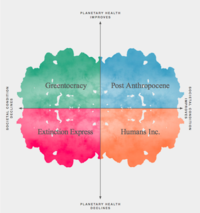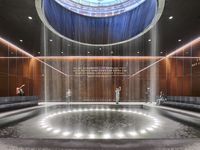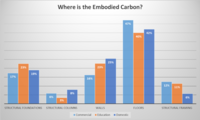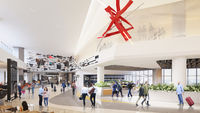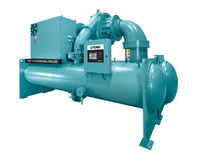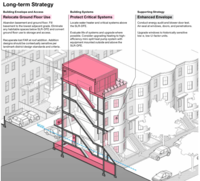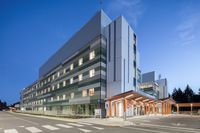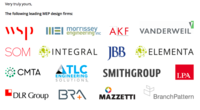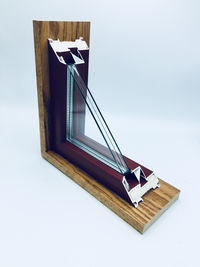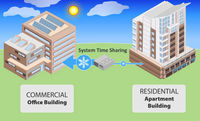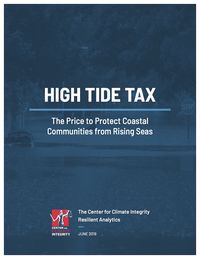News Brief
The four 2050 scenarios range from apocalyptic to acceptable.
At this point, there is no escaping the effects of global warming on our climate and our society. But what will those changes look like? Arup tries to answer that question in a December 2019 report titled Four Plausible Futures: 2050 Scenarios. The purpose of the report is to help firms prepare design solutions based on global trends.
... Read more
News Brief
Vermont’s Green Mountain Power is offering a first-of-its-kind pilot program that allows consumers to sell renewable energy credits directly to businesses.
Vermont’s Green Mountain Power is a unique utility. It actually encourages the use of renewable energy and, as of December 2019, its customers will be the first in the U.S. able to sell the power they generate directly to local businesses through the utility’s Vermont Green pilot program.
This program... Read more
Op-Ed
AIA’s “Big Move” invites architects to step up to the challenges of our time.
In 2019, The American Institute of Architects announced a shift that is nothing less than transformational for the 160-year-old organization, and unprecedented among professional associations. The Institute, which has historically dedicated itself to defending the turf of licensed architects and recognizing the professional achievements of its... Read more
Feature
From an affordable multifamily building to an iconic museum, these projects are designed and built to advance equity, diversity, and inclusion.
Inequity is woven into the fabric of our built environment.
Cities are endemically segregated by income and race. Many building projects seek to enhance the profits of developers, often at the expense of the surrounding community. The building professions (as detailed in part one of this series) lack diversity, leading to the... Read more
News Brief
The real estate industry is increasingly paying attention to climate risks.
Sustainability isn’t enough anymore, and that realization is starting to catch on in the green building world. That’s why participants in the GRESB survey—a way for real estate and infrastructure companies to track and disclose their environmental performance for investors—are beginning to focus on climate risk management in addition to... Read more
Spotlight Report
Inequity is woven into the fabric of our built environment.
Cities are endemically segregated by income and race. Many building projects seek to enhance the profits of developers, often at the expense of the surrounding community. The building professions lack diversity, leading to the unconscious but systemic exclusion of... Read more
News Brief
Leading MEP design firms are entreating manufacturers to make products needed for all-electric buildings, like large capacity heat pumps.
This article highlights an initiative of the Sustainable MEP Leaders peer network, one of several peer networks supported by BuildingGreen. While BuildingGreen convenes the networks, initiatives are entirely directed by the participants.
As momentum builds for electrification—with some cities going so far as to ban natural gas—MEP... Read more
News Brief
More than half of a building’s embodied carbon is in its bones, prompting research—and soon, a new Revit tool.
Which structural component would you expect to have the most embodied carbon? The foundation? The framing? The answer is actually the floors, according to an analysis of more than 600 buildings conducted by the engineering firm Thornton Tomasetti. (Disclosure: BuildingGreen’s president, Nadav Malin, is on Thornton Tomasetti’s Sustainability... Read more
News Analysis
Considering projected weather is a new design imperative. You could even face lawsuits if you don’t.
You hope your building is going to last for at least 50 or 60 years—so why are you designing it for the past?
More and more building professionals are beginning to ask this question. The climate is already changing, but the weather files used to model features like passive design, choice of mechanical equipment, and sizing of stormwater... Read more
Product Review
YORK YZ Magnetic Bearing Centrifugal Chiller is the first chiller to be optimized for use with a low-GWP hydrofluoroolefin (HFO) refrigerant.
Refrigerants are a unique problem in the green building world. Even the most energy-efficient chillers and heat pumps use them, and many of these refrigerants have global warming potential (GWP) more than a thousand times that of CO2. The “next generation” hydrofluoroolefin (HFO) refrigerants are a good solution, but if they are dropped into... Read more
News Brief
More than 6,500 parcels may be subject to new design guidelines designed to protect against sea-level rise.
The City of Boston is projecting 40 inches of sea-level rise by 2070, putting vast new swaths of the city within the 100-year flood plain. To prepare, the Boston Planning and Development Agency has recommended adopting a zoning overlay and released a set of design guidelines for projects residing within that zone.
If the zoning overlay... Read more
News Brief
A California county has the first code to address both concrete performance and concrete’s carbon emissions.
In November, California’s Marin County adopted the world’s first building code that limits carbon emissions from concrete. (Concrete’s Portland cement content accounts for more than 6% of anthropogenic carbon emissions.) The code focuses on concrete performance, creating standards for composition that “maintains adequate strength and durability... Read more
Spotlight Report
People from marginalized communities are shockingly underrepresented in the U.S. building industry. It’s past time to change that.
In this report, we look at the depth and breadth of the building sector’s equity, diversity, and inclusion (EDI) problem; the negative implications for the industry; and some things individuals and firms... Read more
Feature
People from marginalized communities are shockingly underrepresented in the U.S. building industry. It’s past time to change that.
Black people can’t be architects.
That bigoted statement came from the mouth of a child in reference to William Bates, FAIA, 2019 president of The American Institute of Architects (AIA). Although most adults wouldn’t say such a thing, our minds might go there due to messages we’ve assimilated based on cultural norms—messages like “... Read more
Webcast
The Center for Active Design (CfAD), operator of Fitwel Certification System, recently launched Fitwel 2.1 which advances a vision where every building and community is optimized for health. Fitwel 2.1 features several new and enhanced products and systems including:
a separate pathway for new construction projects newly developed Retail... Read moreBlog Post
We need to eliminate toxic fossil fuels from our buildings. This joint letter to HVAC equipment manufacturers asks them to address the gaps in the equipment that’s currently available.
Have you been moving toward electrifying HVAC systems but struggling to find the equipment you need?
Many engineers are in this position—and the Sustainable MEP Leaders are trying to change that. The Sustainable MEP Leaders peer network brings together the most committed sustainability directors from leading MEP design firms throughout... Read more
Product Review
These innovative products reduce carbon emissions’ impacts and include energy-saving windows and insulation, plus low-carbon pavers, gypsum, and MDF.
For the past 18 years, BuildingGreen has recognized green building products that significantly improve upon standard industry practices. This year we are focusing on the world’s greatest challenge: reducing the environmental impacts of greenhouse gases. The following products do so by conserving energy, reducing emissions, and managing carbon... Read more
News Brief
If you thought doing an energy model on one building was hard, try a whole district. But NREL is going to make it easier.
In theory, district-scale energy systems are the future. But there’s a big problem: it is very difficult to model them—which in turn makes it difficult to design them. That’s now being rectified with the Urban Renewable Building and Neighborhood optimization (URBANopt), an EnergyPlus- and OpenStudio-based simulation platform being developed by... Read more
News Brief
“Strengthening Transparency in Regulatory Science” is a draft rule requiring disclosure of personal health information.
A proposed rule from the U.S. Environmental Protection Agency (EPA) would limit which scientific studies can be used to make regulatory decisions, according to an analysis by Lisa Friedman of The New York Times. The Strengthening Transparency in Regulatory Science Proposed Rule calls for full transparency of underlying datasets, including the... Read more
News Brief
Defending against sea-level rise will be almost as expensive as building the interstate highway system, according to a recent report.
Protecting roads, railways, and other public infrastructure from rising seas is going to be expensive. A recent report from the Center for Climate Integrity and Resilient Analytics is the first to tally the costs—an estimated $400 billion over the next 20 years. “Protecting America from climate change will be the most all-encompassing... Read more

